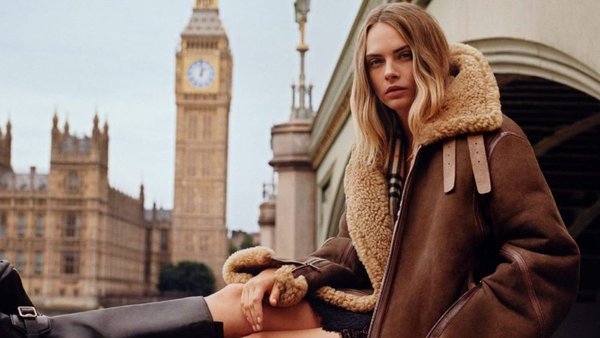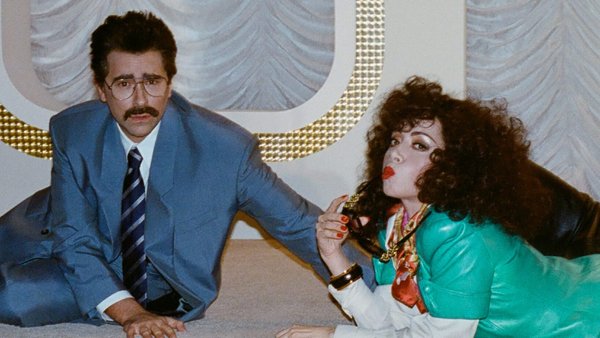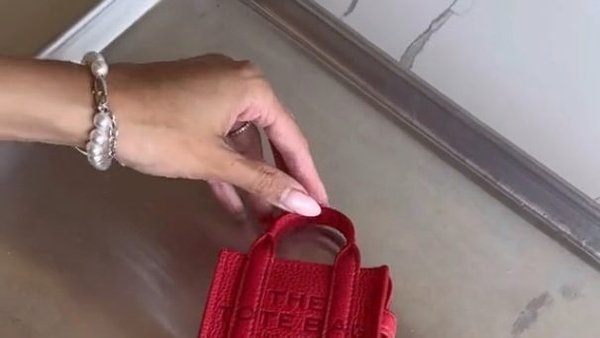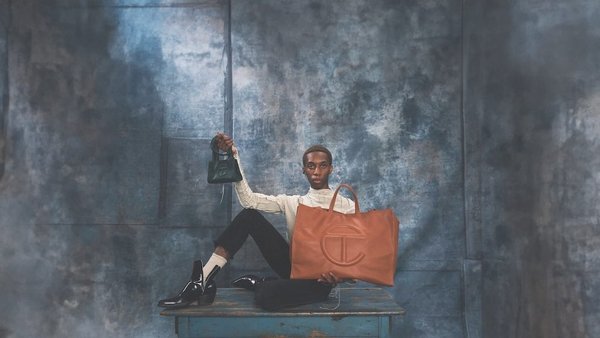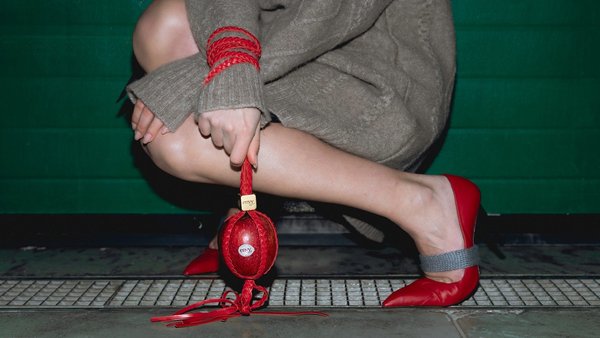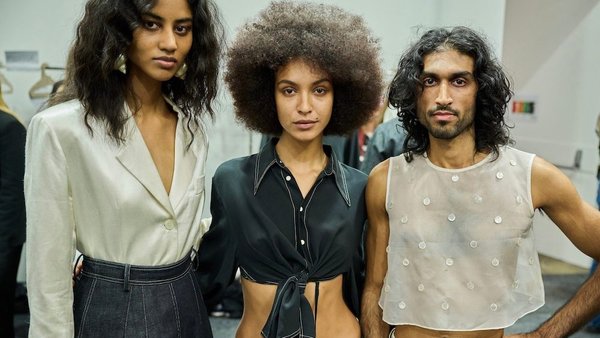At a glance /
- Gucci has found a way to be an aspirational brand while embracing inclusivity – fostering its community through its digital strategy, and improving representation both in outward facing content and within the company too
- It is appealing to younger, Gen Z customers with brand storytelling that focuses on human, emotional benefits, as opposed to the luxury standards of quality and exclusivity
- The luxury fashion house has found social media success by following how the TikTok community engages with the brand, rather than trying to dictate content or crowbar its way onto the platform
- Gucci was early to embrace gaming, a space that exemplifies its ability to morph to meet its audience where they are, without forgetting the brand’s distinctive qualities

There aren’t many luxury fashion houses that would choose James Corden to front a handbag campaign. But Gucci, for all its heritage and tradition, isn’t a conventional luxury brand. In April last year, to reintroduce a collection of its signature bags, Gucci created an activation in the style of a late-night talk show. Shot by photographer and filmmaker Harmony Korine, The Beloved Show saw friends of the House of Gucci, such as Harry Styles, Serena Williams and Diane Keaton, sit down with The Late Late Show host, all decked out in Gucci garb and brandishing iconic Gucci handbags.
The concept was dreamt up by Gucci’s illustrious creative director, Alessandro Michele – and it’s a prime example of the kind of offbeat, culturally fluent, disruptive vision that he has brought to the brand in his eight-year tenure. Under Michele, Gucci has cemented its place in pop culture. It has connected with younger customers through a social media strategy driven by inclusivity and was a first-mover among luxury brands in the gaming space. It has showcased gender-fluid designs and made muses of chic oddballs like Macaulay Culkin and Jared Leto.
Michele’s Gucci is collaborative, untethered to trends, and imbued with his maximalist, highly referential aesthetic that celebrates and encourages self-expression. ‘It isn’t about looking rich, and it isn’t about looking like everyone else,’ says Hannah Marriott, former fashion editor of the Guardian. ‘The aspiration is to be yourself in a radical way.’
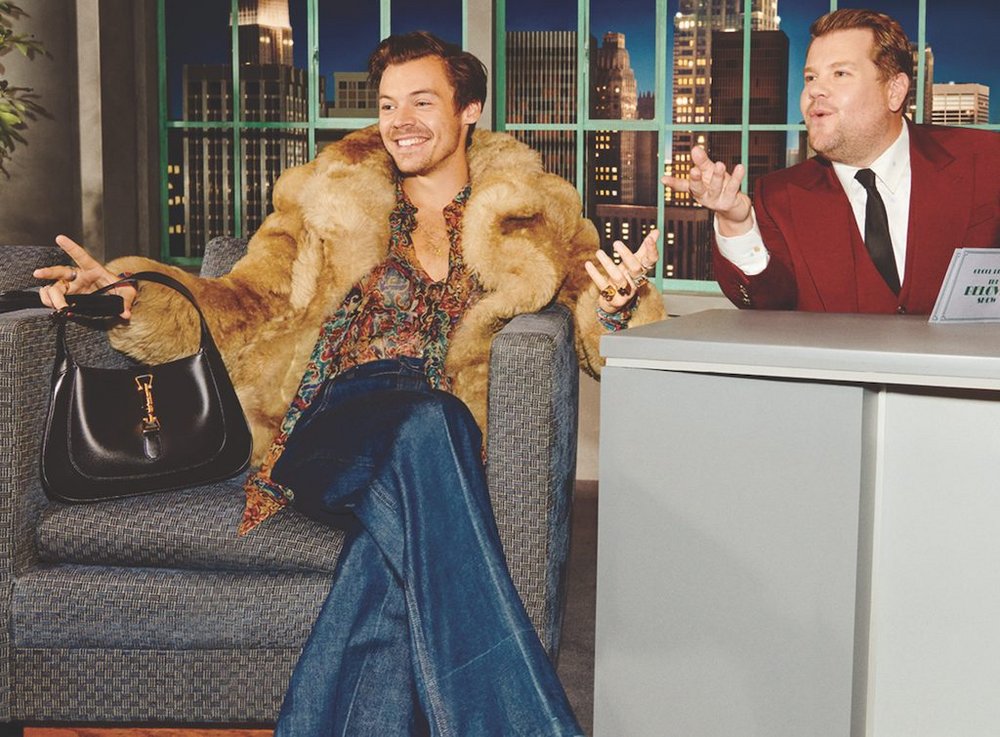
Led by Michele and CEO Marco Bizzarri, Gucci has pushed its way to the forefront of the zeitgeist, becoming the most popular luxury brand on TikTok (with 1.6 million followers) and receiving 15.2% of the total search interest for luxury goods in 2020 (according to online luxury business magazine Luxe Digital). Last year, it was ranked as the world’s hottest brand by online fashion retailer Lyst for four successive quarters. The brand is striving to redefine luxury for the 21st century, says parent company Kering (Gucci generates around 60% of the French-based luxury group’s global revenue).
In other words, as Robert Triefus, executive vice president and corporate CMO at Gucci, told Central Saint Martins’ magazine 1Granary last year, ‘Michele has hijacked some of the preconceived ideas about what luxury has to be defined by and found a way to be an aspirational brand while still being inclusive.’
You might wonder what business a luxury heritage label has becoming more inclusive – isn’t the very idea of luxury rooted in scarcity and exclusivity? Like most other brands, Gucci has taken steps over the past few years to improve representation in both its outward facing content and within the company.
In 2020, for example, the label drew praise when it made 18-year-old Ellie Goldstein, a model with Down syndrome, the face of a Gucci Beauty campaign (the image of Goldstein on the Gucci Beauty Instagram account went on to become its most-Liked ever). And back in 2019, after one of Gucci’s balaclava designs was criticised for its resemblance to blackface, the brand responded to the backlash by establishing an action plan to support diversity and inclusion, and offer professional exposure, scholarships and funding to underrepresented groups.
But inclusivity at Gucci goes beyond representation or supporting diverse communities: it comes through in Michele’s aesthetic and the way Gucci fosters its community through its digital strategy. ‘The mega-trend today is not about exclusivity,’ Bizzarri told Kering investors in June 2018. ‘Today, what is going to win is inclusivity of the brand, in all the aspects – shops, advertising, communication and people, especially.’
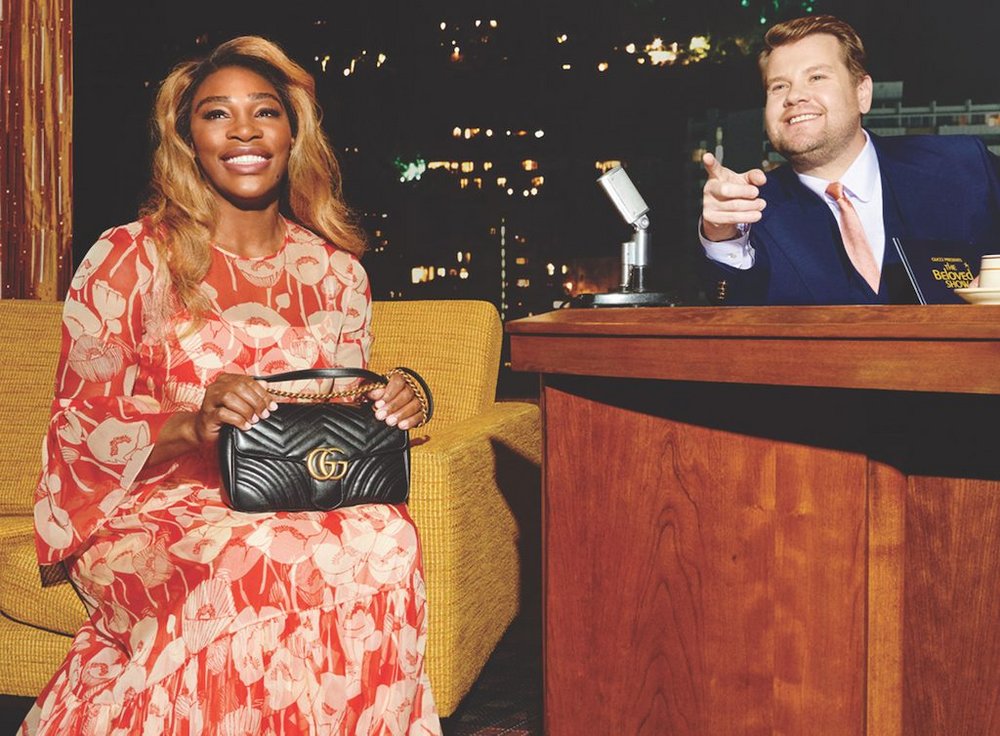
Fit for the times
It’s this seemingly contradictory balance of aspiration and inclusivity that has helped Gucci resonate with a new generation of consumers: Gen Z. Born from 1997 onwards, this group are set to become huge spenders; according to Vogue Business, the percentage of Gen Z luxury shoppers ‘who plan to amp up their spending on luxury fashion’ rose from 11% in late 2020 to 19% in June 2021, while the Business of Fashion reports that Gen Z will account for 40% of the global personal luxury goods market by 2035.
Consumer research frequently tells us that this cohort responds to brand storytelling that focuses on human, emotional benefits. That’s not necessarily the approach that many luxury brands take, instead relying on the quality and exclusivity of their products to attract customers. But Gucci has managed to appeal to younger customers by pivoting away from some of the outdated tenets of luxury.
In May 2020, for instance, Michele announced via Instagram that Gucci was scrapping the fashion calendar and would be showing twice, rather than five times a year. ‘We have some rules in fashion that we have been using for years, but maybe they’re no longer appropriate,’ Michele said during a media Zoom conference in 2020.
Hannah Marriott, Fashion journalist
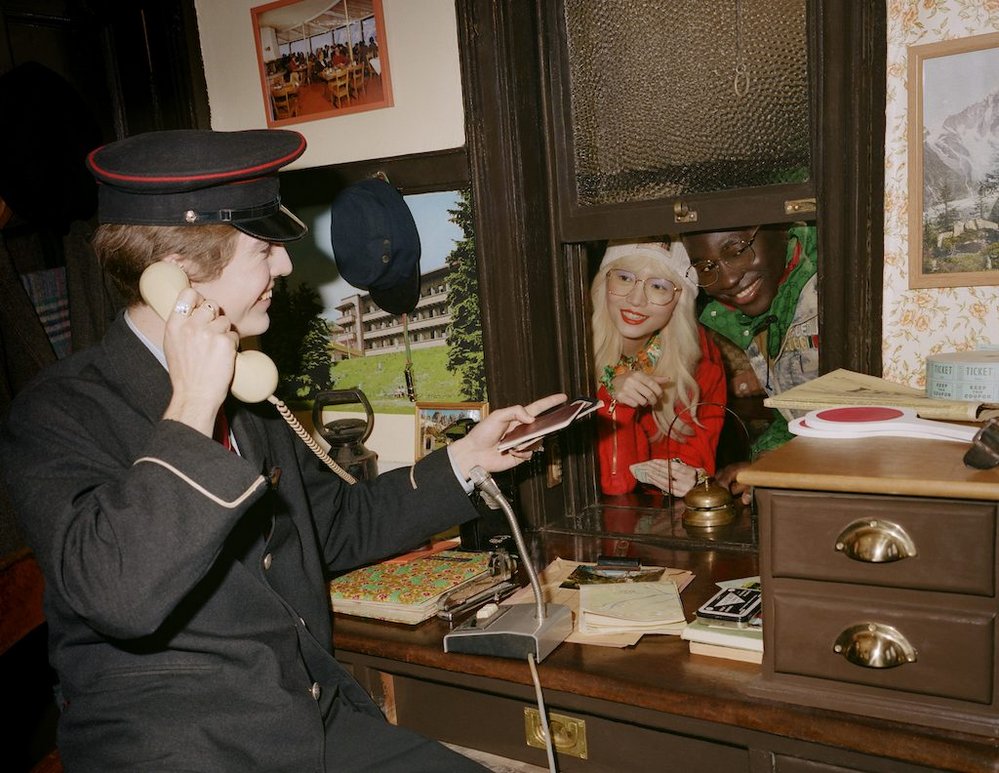
And from a merchandising perspective, Gucci now creates more commercial (dialled down) versions of accessories that appear on the runway during the design process, resulting in a wider range of entry-level products that feel faithful to Michele’s collections. The label has also broadened its definition of luxury through unexpected collaborations, such as its collection with outdoor apparel brand The North Face, launched in January last year.
The line featured items ranging from $600 to $6,000, including baseball caps and slides (demand for which caused the Gucci site to briefly crash when 1.7 million people registered for early access). In January this year, Gucci recruited the cheerfully eccentric trainspotting TikToker, Francis Bourgeois, to star in a film launching the second chapter of the collaboration. ‘Having Bourgeois in this campaign is a great example of how the internet’s cultural gatekeepers can cross over into the fashion and luxury landscapes in engaging and authentic ways,’ said David Fischer, CEO of online lifestyle magazine Highsnobiety, which produced the train-themed brand video.
‘There used to be an idea of what a luxury brand was,’ says Marriott. ‘A bit cold and standoffish, ostentatiously expensive and for rich people. There’s the idea that with luxury fashion, you’re not really expressing yourself, you’re toeing the line. Somebody says you should wear red this season, so you do. That idea – which is not very cool, and seems pretty dated and not where culture is – is where a lot of designer brands probably still are.’
Luca Morena, Nextatlas
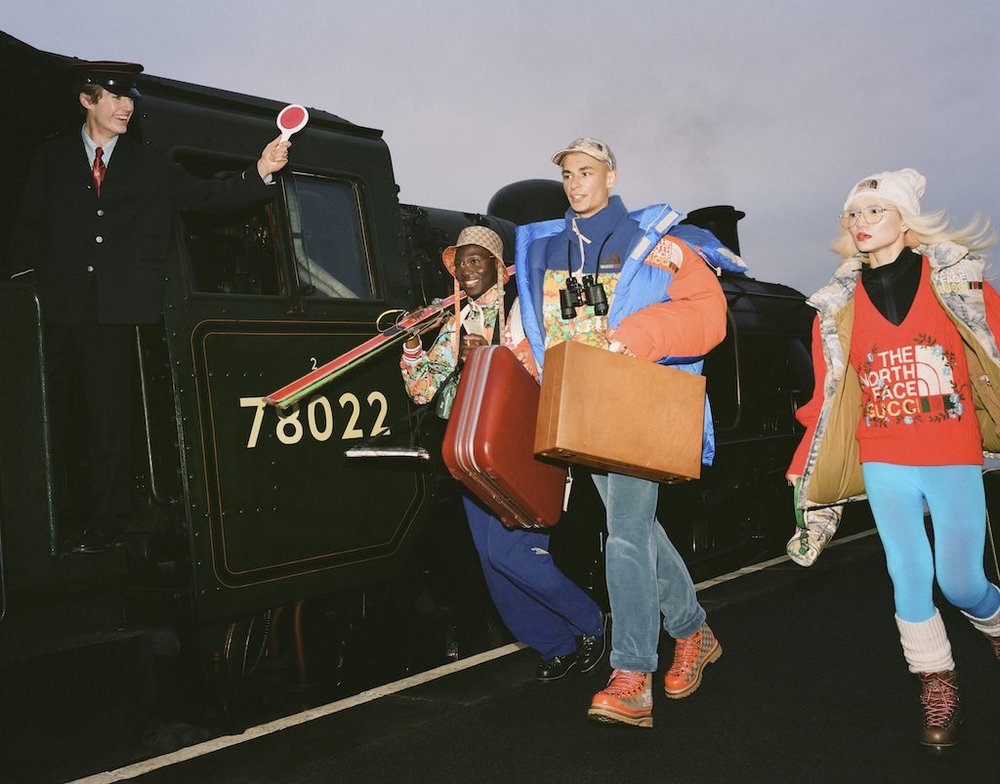
Luxe Likes
Arguably, the biggest difference with Gucci and other luxury fashion brands is its steadfast focus on self-expression, and this comes through in its communications, as well as its designs. As CMO Triefus told Luxury Highlights (a site run by Kering), ‘[Michele’s] vision of fashion is really to allow individuals to express themselves. This is what our brand stands for today, and what drives our digital strategy.’
Since 2018, Gucci has been connecting with its community of fans by delivering interactive, original, creative content via Instagram, YouTube and TikTok. As of April 2021, Gucci was the third most popular luxury brand in terms of total social media audience size (behind Louis Vuitton and Chanel).
Creating content for social media doesn’t come naturally to most luxury brands, points out Luca Morena, co-founder and CEO at Nextatlas, a company that uses AI to predict and monitor emerging consumer trends. ‘Luxury was meant to be polished, super controlled, and [social media] is very different – it’s self-expression, creativity. How can Gucci do this kind of work and keep its luxury aura?’
The answer lies with its astute creative director, he says. ‘Michele’s personality is more TikTok, less luxury.’ Gucci has embraced the interactive nature of social media, agrees Triefus. ‘In the past, luxury brands have been controlling forces, with one-way communication at arm’s length,’ he told Interbrand in 2020. But ‘the reason [Gen Z] are engaged with Gucci is that they see a perfect imperfection in what the brand does’, made possible only by ‘a two-way inclusive dialogue between the brand and its community’.
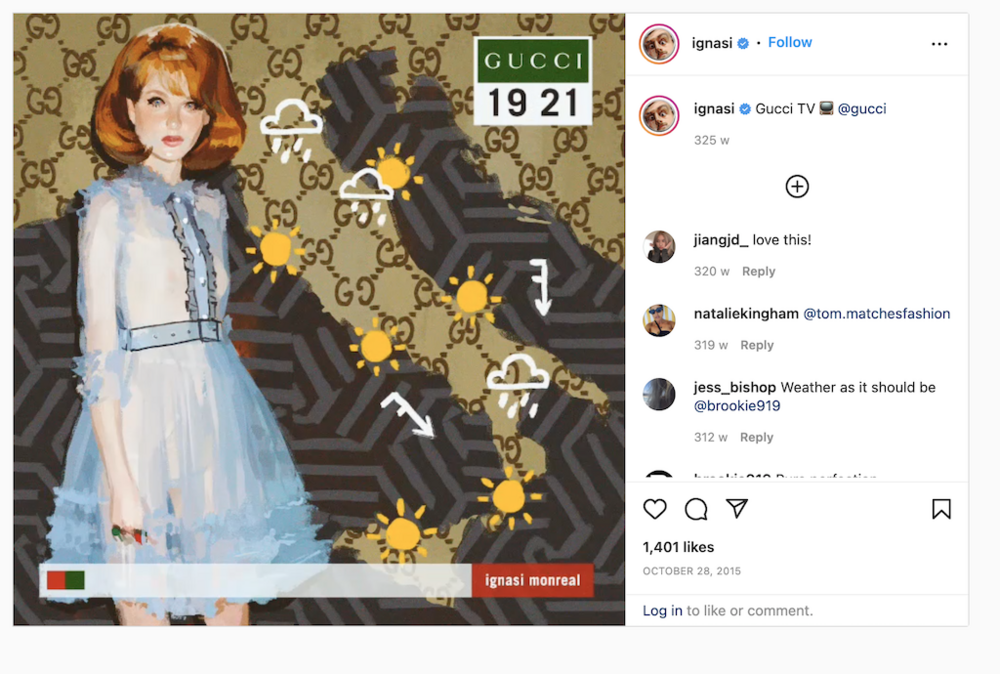
Michele’s #GucciGram campaign, for example, all the way back in 2015, used social media to make collaborators of its community. The brand challenged 31 visual artists from around the world to create works of art that incorporated two new Gucci prints, Gucci Blooms and Gucci Caleido. It was a win-win, offering exposure to the selected artists, while attracting the artists’ followers to Gucci’s Instagram account.
Then, in 2017, the brand dipped its toe into meme culture when it commissioned artists to create memes featuring the newly launched Le Marché des Merveilles watch collection. Collaborative projects like these, made for and by Gucci’s online community, offer entry-level customers a slice of the brand while preserving its magic and prestige. ‘The fashion world has become a sort of Woodstock, open to a huge audience,’ Michele said on the 2020 Zoom conference. ‘We are followed by many people who have never entered our stores. They are passionate about us.’
But there is probably no better example of Gucci’s openness to its community on social media than when the #GucciModelChallenge took off on TikTok in August 2020. When TikTok video creator Morgan Presley posted a tutorial describing everything you need to look like a Gucci model (a turtleneck, a mismatched shirt, a colourful jacket or vest, sunglasses, a headscarf, heels and socks, pink lipstick) thousands of TikTok users responded with their own DIY Gucci looks (the tag has 274.5 million views).
While another brand might have baulked at being reduced to a 35-second TikTok, Gucci welcomed the trend as an expression of creativity and its social media team reposted some of its favourite #GucciModelChallenge looks on its official TikTok channel. ‘Luxury brands are usually very controlling, but Gucci managed to do it in quite a relaxed way,’ says Marriott. ‘They accepted the terms of engagement.’
Hannah Marriott, Fashion journalist
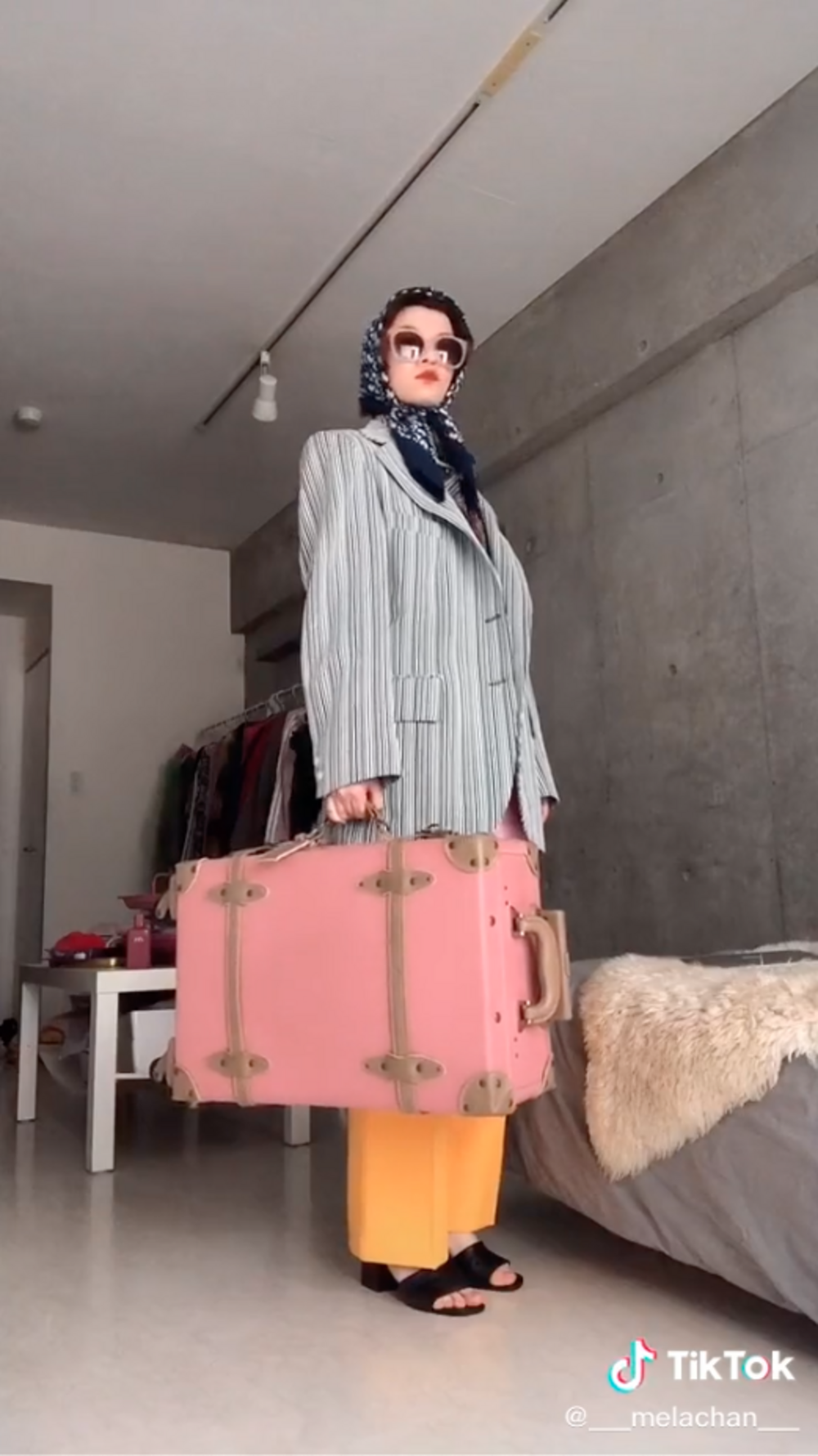
Crucially, Gucci seems to understand how to create content for TikTok, rather than crowbarring existing content into the platform, says Morena: ‘The more you are native, the more your audience trusts you there.’ When Gucci launched its Accidental Influencer campaign (promoting the revived Gucci Tennis 1977 shoe) in 2020, it created original videos for TikTok that riffed on the campaign imagery but mimicked the tropes of popular content on the platform. The same models and outfits featured, but they bobbed to an original Gucci piano soundtrack before disappearing into thin air, replaced by similar-looking objects (as featured in the campaign photos).
It’s tricky to attribute hard sales results directly to these kinds of activations, but there’s no arguing that Gucci’s digital strategy has been key to the brand’s turnaround over the past eight years. According to Business Insider, Gucci’s sales nearly doubled in the first half of 2018, with under-35-year-olds accounting for 55% of those sales. ‘Gucci is really obsessed with being a brand that people are genuinely talking about,’ says Marriott. ‘And you can’t have that genuine cultural cachet and talkability on the internet without engaging with Gen Z – they’re kind of in charge on the internet now.’
Robert Triefus, Gucci

Level headed
If, like Gucci, your digital strategy is to connect with younger consumers by inspiring and fostering their self-expression and creativity, then gaming is an obvious next step. ‘It’s diverse, it’s inclusive, and in that sense, it’s an adjacent community to fashion,’ Triefus said at the 2021 Vogue Business and TikTok Technology Forum. ‘Games today have a strong correlation with the idea of expressing yourself.’ Video gaming is now the world’s most lucrative entertainment industry and according to a study carried out by the Washington Post and the University of Massachusetts Lowell, most young people in the US now identify as ‘gamers’.
The past few years have seen more luxury labels experiment with gaming. Last year, Balenciaga created a video game to stage a collection, while in 2020, Valentino, Marc Jacobs and Anna Sui all released in-game clothing items to be worn by avatars in Animal Crossing: New Horizons.
But Gucci was early to the trend in 2018, becoming the first brand to partner with Genies, an app that enables people to create expressive, detailed avatars that can be used to communicate in messaging apps such as WhatsApp. In line with the partnership, Gucci created 200 digital items based on its real-life collections; Genies users could buy exclusive digital Gucci clothing and accessories for their avatars, giving those who might otherwise be priced out an opportunity to engage with the brand.

The following year, the brand launched Gucci Arcade – a section of its app where users can play retro-style 8-bit arcade games and win digital Gucci badges. It has since added an augmented reality feature to Gucci Arcade called Gucci Sneaker Garage, which enables virtual try-on of its Ace sneakers, and last year the brand tasked digital creative studio Superhero Cheesecake with creating a desktop game inspired by (and promoting) its newly launched Gucci Basket sneaker. ‘Players try to beat their high score across multiple levels of increasing difficulty in a world inspired by 1980s Memphis style,’ explains Esmee Lechner, design director at Superhero Cheesecake. ‘Not one to settle for (already) award-winning games, Gucci asked us to raise the bar.’
Over the past two years, Gucci has debuted a sustainable fashion line called Gucci Off The Grid for The Sims 4, teamed up with video games Tennis Clash and Drest to sell exclusive clothing for the in-game avatars, and partnered with Animal Crossing gamers to build GG Island, a virtual oasis inspired by the Gucci Guilty perfume line. And after unveiling in real life, The North Face x Gucci Collection was made available in Pokémon Go, enabling players to pick up avatar items based on T-shirts, hats and backpacks from the line at 100 ‘PokéStops’ around the world.

Virtual insanity
Gucci’s success in gaming has set it up for exploring the possibilities of the metaverse, where it has a competitive advantage, says Nextatlas’ Morena. ‘Gucci is metaverse-native because they are maximalists in their aesthetic choices. And if there’s one trend, aesthetically speaking, in the metaverse, it’s maximalism,’ he says. ‘You’re not constrained by physics, by logic, by resources. You can just be creative. And [Gucci] are doing this in the real world. This is natural for them.’
In 2020, Gucci created a limited collection of handbags, sunglasses and hats for avatars in Roblox, an online platform that allows its nearly 50 million daily users to program immersive virtual worlds and experience the content created by other users. Last year, the label built on this by painstakingly recreating Gucci Garden Archetypes (a multimedia exhibition at Gucci’s museum in Florence) as an interactive experience on Roblox.
As users’ Roblox avatars passed through the themed rooms, they could discover, purchase (for between $1.20 to $9) and wear exclusive Gucci virtual items directly in the experience. The exhibition was open for two weeks and according to Roblox, more than 4.5 million items were ‘won’. After the Roblox Gucci Garden closed its doors, some of the limited virtual items – including an avatar of the Gucci Dionysus Bag with Bee, which had been made available for just one hour and sold for 475 Robux (equivalent to $6) – were resold by users for hundreds of times the original price. One Roblox user paid 350,000 Robux (roughly $4,115) for the digital accessory – more than the real-life version sells for. To be clear, the Roblox bag has no value or use outside the world of Roblox; similarly to real-world luxury, its price was driven up by the illusion of scarcity.
Sara Gay Forden, Author, The House of Gucci

‘Scarcity, like exclusivity, is an important aspect of the luxury experience,’ Triefus told 1Granary. ‘The challenge lies in how you create it in a justifiable and equitable way. Can we justifiably replicate the value system of the physical world in the digital world?’ NFTs (non-fungible tokens) might be a way for Gucci to accomplish just this. NFTs can democratise access to luxury goods, while preserving their rarity (as they are one-offs that can’t be cloned). Gucci has only just begun to experiment with this technology.
Last year, the brand created an NFT of a four-minute film inspired by a Michele runway presentation. It sold for $25,000 in an online auction hosted by Christie’s, with the proceeds going to Unicef USA. And in January this year, Gucci shared a link on Twitter to its Vault server on Discord. The first 20,000 members to sign up were promised access to NFT-focused channels (not yet launched) – 28,000 people registered in the first two days.
The launch was accompanied by the release of 10 ‘Supergucci’ NFTs, created in collaboration with entertainment brand Superplastic. The collection consists of 250 animal-shaped figurines covered in Gucci prints wearing riding hats (the first 10 dropped on Superplastic’s website on 1 February), and each Supergucci NFT comes with a corresponding handmade ceramic figure.
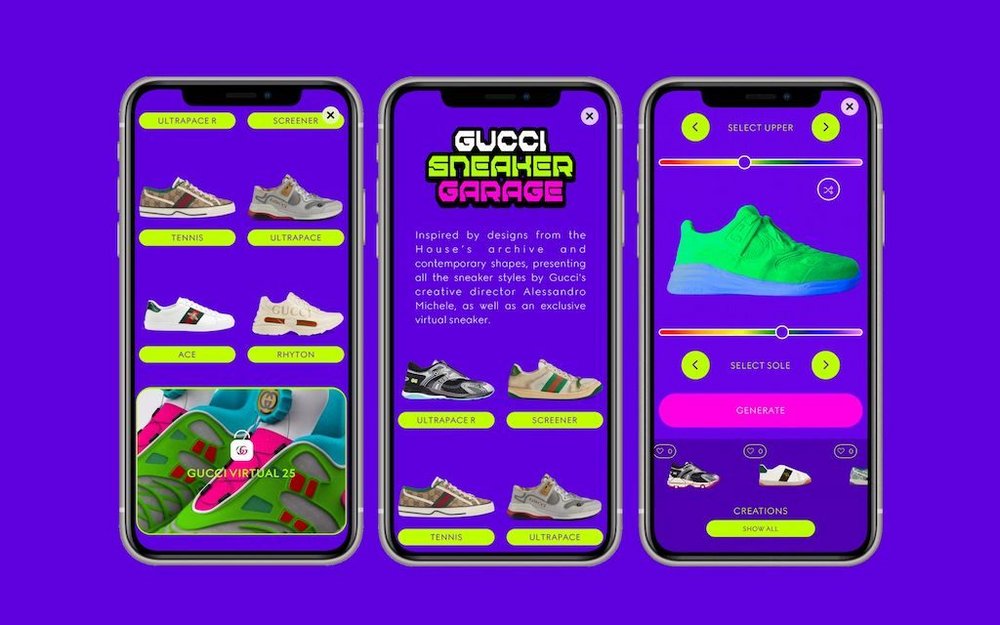
Plot twists
In every space that Gucci occupies – in stores, on social media, in virtual worlds – it remains unmistakably Gucci. The brand’s superpower is that it can move and morph to meet its audience where they are, without losing sight of its distinctive qualities. ‘It’s the product of one vision that is embracing everyone, from the teenager watching TikTok to the nonna who wants a quality piece,’ says House of Gucci author Sara Gay Forden. This is partly due to the strength and recognisability of the brand, but it’s also to do with Gucci’s storied past.
In its 100 years in business, the label has survived scandal, mismanagement and near-bankruptcy. Between family feuds, takeovers, a string of creative directors, and even murder, Gucci has regenerated and reinvented itself, resulting in what brand meaning expert and social scientist Dr Martina Olbert refers to as a ‘scattered image’. ‘Because they were so challenged in so many ways throughout the last century, they had to pivot in order to survive, to even be in business,’ she says.
‘As a result, they were able to create new audiences in different markets with very different senses of aesthetics, designs and collections, that speak to different audiences.’ The fact that Gucci continues to be relevant to different generational cohorts and audiences across different touchpoints is not the result of ‘a really well thought out pre-planned strategy’, argues Olbert, but Gucci’s diversification has enabled the brand to thrive where its competitors have struggled to adapt and evolve.
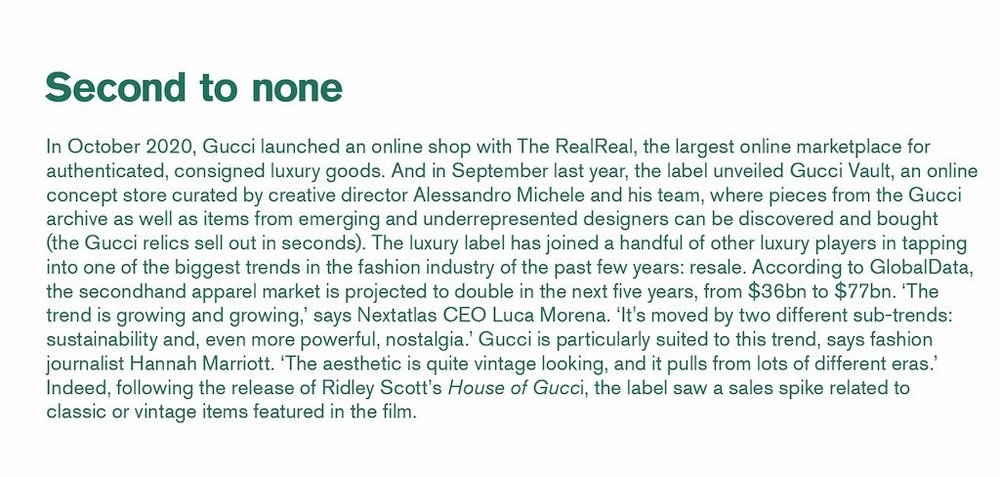
In 2020, Gucci’s ability to adapt faced the ultimate test: the global pandemic, which spelled disaster for retail and apparel in particular. Like other labels, Gucci delivered virtual runway shows and even curated a week-long digital fashion and film festival presented through YouTube, Weibo, and a dedicated site, GucciFest.com. And while growth slowed (Gucci’s sales totalled $10.9bn at the end of 2019 and fell to $9bn the following year), the business didn’t suffer as much as analysts predicted.
According to the Business of Fashion, organic revenue at Gucci fell 8.9% in the third quarter, compared to the 10% drop projected by analysts. And by the first quarter of 2021, Kering reported that Gucci had made a strong recovery, seeing comparable revenues increase by 24.6%. ‘Gucci is a commercial marvel,’ reported the Washington Post towards the end of last year. ‘Company revenue has nearly bounced back to 2019, pre-pandemic levels, ringing up nearly €4.5bn ($5.2bn) in sales in the first half of 2021.’ In Q4, Gucci again outpaced analysts’ predictions when revenues grew by 32%, bringing the label’s total revenue for 2021 to €9.73bn ($11.07bn).
Despite a patchy financial record over the past couple of years, Gucci is undoubtedly at the top of its game and continues to be relevant. ‘If you analyse Gucci’s history, it’s consistently been a pioneer,’ says Forden. ‘It hasn’t always been on top, but it’s always been leading at different stages of its history.’ By standing for the bold, creative self-expression of its customers, Gucci has created a brand story that resonates at a human, emotional level with people of any age or background; it’s not about rigid trends, or outdated rules, or one-size-fits-all. Through a revolutionarily inclusive approach to luxury, Michele’s Gucci has translated its heritage for a modern audience and captured the attention of the next generation, staging luxury’s most remarkable comeback in years.
